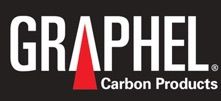Jigs and Fixtures
Graphel Designs and Builds Jigs and Fixtures for EDM Machining
Graphel Partners with Customers for the Design & Build of Jigs and Fixtures for EDM Machining
Here at Graphel, we have found that the best EDM tooling solutions are developed when partnering with our customers on the design of the electrodes, jigs, and fixtures. It has been proven time and time again that these pieces must come together at the start of the work to eliminate misalignment problems and reduce scrap which has proven to be extremely valuable to our customers. The overall cost savings over a job or a project has been substantial with the results often equaling 60%-80% or more in total cost savings.
What does a jig do?
A jig is a device that holds the workpiece and guides the tool during operation. Jigs increase the efficiency of the manufacturing process.
How are jigs used in the EDM process?
- It is used in unidimensional machining processes (linear EDM machining)
- Jigs are self-contained, but the electrode can have a complex shape.
- Jigs can have a higher initial cost than standard EDM work-holding systems (often used with fixtures) but those don't offer the advantage of self-alignment.
- In most cases, jigs do not need to be fixed to the machine table.
What are fixtures?
The term fixtures can be defined several different ways; however, a general definition is the work holding device which holds the workpiece in place but does not guide the cutting tool.
Fixtures are only the workpiece holding devices.
Some Important Points about Fixtures Relative to EDM
- Fixtures are used in multi-dimensional machining (EDM orbiting can be used).
- Standard work-holding systems are often used with fixtures and/or electrode holder(s)
- Alignment pickup features can be designed into the fixture to work with the standard work-holding system to align the electrode to the fixture.
- Cost depends on the level of design complexity and type of standard work-holding system components being utilized.
- As name suggests, fixtures are fixed to the machine table.
Main Differences between Jigs and Fixtures:
- The jig is used for guiding the cutting tool, which in the case of EDM is the manufactured electrode.
- A fixture does not have contact with the cutting tool and is fixed to the table
What types of jigs and fixtures does Graphel offer to their customers?
There are several types of Jigs and Fixtures available that we design & build at Graphel. Listed below are a few examples of what we offer:
- Standard vertical designed die-shoe EDM jig
- Angle plate die-shoe EDM jig (to kick the workpiece 90 degrees)
- Custom stand-alone work holding fixtures mounted on a base plate that mounts directly to the machine table.
- Angle plate fixtures that can kick a workpiece 90 degrees relative to the worktable
- Angled fixtures that can kick a workpiece on an angle or compound angle relative to the worktable
- Indexing fixture- used in EDM features in circular patterns.
- Any of the above mounted to standard work-holding systems (System 3R, Erowa, Schunk)
Why use Graphel for designing and building your jigs and fixtures?
There are many advantages partnering with Graphel for jigs and fixtures, but the number one advantage is over-all operational cost savings. Graphel is extremely fortunate to have a team with many decades of experience in electrode design and electrode holder (jigs & fixtures) design and we put that experience to work at every opportunity to support and improve our customers process and reduce their overall operating costs.
Graphel has the engineering and manufacturing capabilities to support your new or existing projects/process challenges to improve efficiencies and reduce overall operating costs. If you would like schedule a time to talk with one of our design or manufacturing engineers, please use the chat or contact form or use the email or phone number below.
Since 1965
© All Rights Reserved.
